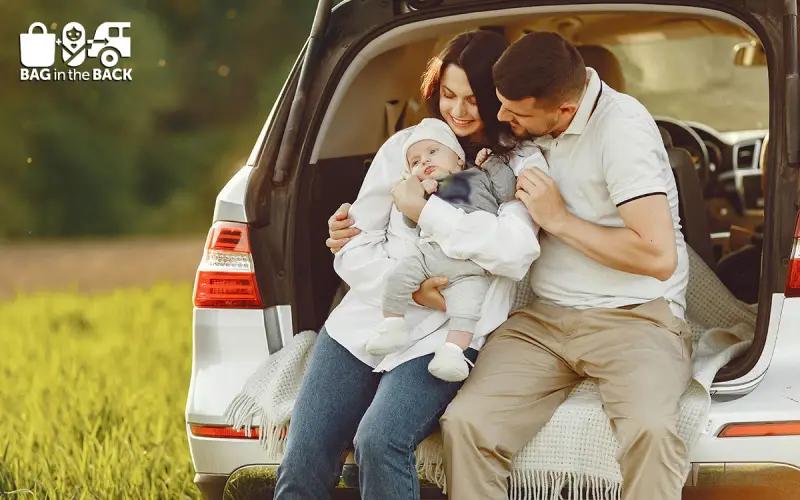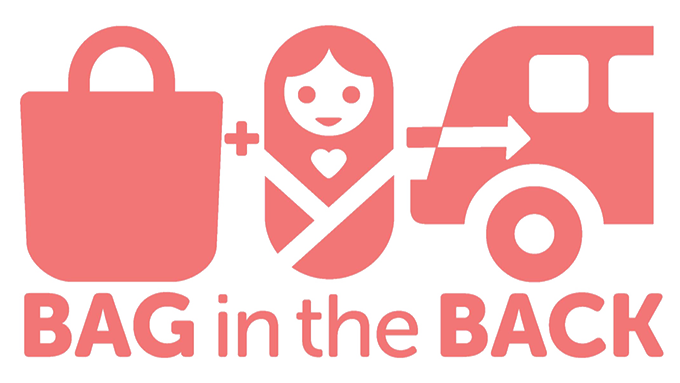
18 Aug Fun in the Sun: Balancing Summer Adventure and Child Safety
School’s out, and the sun is shining bright—there’s no better time for your little ones to embark on exciting summer adventures! Balancing their enthusiasm and safety is a top priority, and we’re here to guide you through it. Discover our collection of safety tips and practices, designed to ensure your children have a blast while staying protected from potential hazards
It’s summertime 🌞 – the season for exciting adventures and endless possibilities for kids! From family road trips and camping in the wilderness to wonderful seashore explorations, this beautiful time of year offers numerous opportunities for children to embrace the joys of the sunny season.
As parents and caregivers, it’s our responsibility to ensure our kids make the most out of their summer break while keeping them safe. But with extreme temperatures posing serious risks, it’s crucial that we find the right balance between allowing our children to embrace the excitement of summer and ensuring their well-being.
That’s where the “Bag in the Back” comes in. Our mission is to create a memorable and safe summer by advocating for child safety in all activities and preventing pediatric vehicular heatstroke (PVH), an avoidable tragedy.
Before you embark on your big summer plans, take a moment to explore the important safety tips and information we’ve gathered for you below. Share this valuable resource with your friends and family, because together, we can make this summer unforgettable for all the right reasons.
Understanding Real-World Reasons for Unintentionally Leaving Children in Hot Cars
During the summer, one of the things that most families have in common is that all of our schedules tend to get a little chaotic. There’s extra time for family outings, vacation travel, and other activities.
While unintentional, this means it’s easy to neglect our little ones and leave them unattended for short periods of time inside our vehicles. But safety experts warn that parents might not realize just how hot their car can really get on a warm summer day, even if it’s parked in the shade, and how important it is to never leave your child alone inside the vehicle, even if it’s just for “a few minutes”.
It doesn’t take long for a vehicle’s temperature to rise dangerously high. Even with windows rolled down, it can reach dangerous levels in just minutes. A child’s body heats up three to five times faster than an adult’s body, so children are at an even greater risk for heat-related injuries and death if they’re left unattended.
As a reminder to keep our kids top-of-mind while we’re preparing for an activity-filled day out, here are some common, real-life situations where kids could accidentally be left inside hot vehicles:
- Hectic Summer Morning Routines
During the summertime, the rush to get everyone ready and out the door can be even more chaotic than during the school year. With vacations, summer camps, and different drop-off locations, parents may become distracted and accidentally forget that their child is still in the car amidst the hustle and bustle.
- Child Falling Asleep in the Car
Summer road trips often involve long hours on the road, and the warm sun can lull children into a peaceful sleep. However, upon reaching their destination, parents or caregivers may unintentionally leave the child in the car while assuming they have been safely brought inside.
- Coordination Challenges & Miscommunication for Busy Parents
With the added responsibilities and activities that come with summer, miscommunication between parents can easily occur. Each parent may assume the other is taking care of the child during transportation, leading to unintended oversight.
- Quick Errands & Unexpected Delays
Quick, frequent temporary stops can sometimes result in children being left behind in a vehicle, especially if unforeseen circumstances such as unexpected delays or distractions arise.
- Playful Hide-and-Seek Adventures
Curious and adventurous children often engage in lively games during the summer, such as hide-and-seek. In some cases, children may decide to play this game in the car without their parent’s knowledge, unintentionally remaining inside the vehicle unaware of the potential dangers.
- Summer Trips With Other Family Members
Another reason why kids love summer is because they may be spending time with family members who they don’t often see. Oftentimes, these family members may either not be used to the daily routine of taking care of a child, or if they already have children, they may forget that they have an additional child in their home.
Anyone Can “Forget” A Child In A Car
When it comes to PVH, prospective memory (PM) failures, rather than neglectful caregiving, are often the underlying cause. Parents who have inadvertently left a child in a car may even report experiences of ‘false memories,’ where they vividly remember intending to drop off the child as planned, when in reality, they haven’t.
If you’d like to learn more, this Bag In The Back whitepaper explains how PM failures, false memories, and other contributing factors can lead to PVH.
Additionally, Dr. David Diamond, a professor of psychology, molecular pharmacology, and physiology at the University of South Florida, has extensively studied the science behind the phenomenon of children being unintentionally left in cars. He coined the term “Forgotten Baby Syndrome” — but after receiving backlash from parents for this terminology, he no longer uses the term. In any case, the principles remain the same:
- Unintentionally leaving a child in the car often happens when a parent experiences a disruption in their usual routine or becomes absorbed in multitasking while the child is present in the vehicle.
- The profile of a parent who forgets their child in the car does not follow a consistent pattern or specific characteristics. It can happen to anyone, regardless of race, gender, socioeconomic background, or caregiving abilities.
- Leaving a child unattended in a car is not exclusive to “bad” or “forgetful” parenting. Even the most attentive and caring parents can unintentionally make this mistake.
- Many parents believe that unintentionally leaving their child in a car could never happen to them until it does.
The most common solution to ensure that we never risk leaving our children alone inside vehicles in increasingly warmer weather is to be mindful. But being mindful is one thing; learning how to incorporate mindfulness into our daily habits, however, can spell the difference between a fun, summer day out and a tragedy.
This is where the “Bag In The Back” habit can help.
Place A Bag In The Back At All Times: A Lifesaving Habit this Summer
“Bag In The Back” is a simple, straightforward habit that can easily be practiced daily. The approach is simple: leave a bag or an essential item in the back so that you’ll always have a reason to check the backseat before getting out of the car.
How can you help share and spread awareness about the Bag In The Back habit this summer?
- How to Develop the Bag in the Back Habit
- Keep Your Little Passengers Safe
- Explore our library of resources to learn more about vehicular heatstroke and other childhood health concerns
If you have older kids (3+), involving your kids in “get out of the car” games or routines is another creative way to make sure they never get left behind. Here are some ways to do it:
- Teach them to say “We’re here!” loudly every time you arrive at your destination or even during quick stops.
- Assign older kids as “kids in the back” helper roles whose job is to remind you that younger kids are in the back.
- Play “remind the driver”, and give them chocolates or other treats they love every time they remind you that they’re still in the back.
Common Summer Risks For Children & The Importance Of Maintaining A Watchful Eye: Practical Tips For Parents
Getting accidentally left inside hot cars isn’t the only health hazard that children are exposed to during the summer months. There are other risks that parents should be aware of and take precautions against:
- Water-related accidents, such as drowning or near-drowning incidents, are a major concern during summer when children spend more time in pools, lakes, and other bodies of water.
Parents should ensure that around water there is constant supervision, appropriate safety measures (such as fences and barriers), and that their children know how to swim or are enrolled in lessons.
- The summer heat can also lead to heat exhaustion or heat stroke.
It’s important for parents to keep children hydrated, avoid prolonged exposure to excessive heat, provide shade and cooling measures (such as fans or misters), and dress children in lightweight and breathable clothing.
- Playground accidents are also common in the summer. With more outdoor playtime, there is an increased risk of playground injuries.
Parents should inspect playground equipment for any potential hazards or damage, supervise children closely during play, and encourage safe play practices like avoiding overcrowded or broken equipment
- Summer is a time for children to sign up for sports programs and various outdoor recreational activities.
Parents should ensure that their children wear appropriate safety gear, such as helmets for biking or skating, and adhere to safety rules. - As children spend more time outdoors, they are more susceptible to insect bites and stings, some of which could lead to serious diseases and illnesses.
Parents should use appropriate insect repellents, avoid areas with high insect activity, and teach children how to identify and react to different types of bites and stings.
Stay Safe And Have Fun This Summer!
Summer is the perfect time for kids to dive into thrilling outdoor activities. But as responsible adults, it’s crucial we take the necessary precautions to keep them safe.
We hope our guide offers you valuable information and safety measures to help you safeguard your children while they soak up the sun and explore the wonders of the season.
Don’t let safety concerns dim the fun—empower yourself with knowledge and create beautiful memories. And don’t forget, leave a bag in the back and save lives!
What’s new at Sofia’s Foundation for Children’s Safety?
In addition to the Bag In The Back campaign, the Sofia Foundation for Children’s Safety is actively developing a comprehensive whitepaper that delves into the common risks and injuries children face around cars.
This whitepaper will provide valuable insights and information to parents, caregivers, and healthcare providers, equipping them with the knowledge to prevent accidents and protect children from harm. Through a dedication to research and education, the foundation aims to create a safer environment for children, both inside and outside of vehicles.
Follow us on social media or look out for updates in your inbox for the latest news here at the Sofia Foundation for Children’s Safety:
If you’re interested in doing more to prevent vehicular heatstroke, consider making a donation and supporting Bag in the Back.
